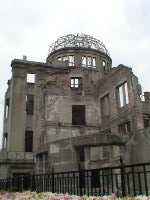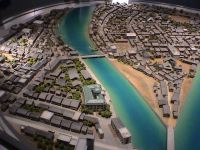|
|
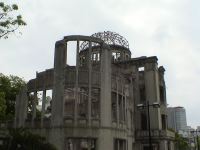
The Dome is a stark survivor of the A-Bomb blast. |
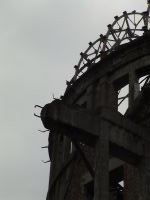
Most of the building was destroyed, but the signature dome remained. |
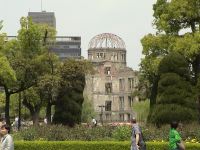
It is now surrounded by a beautiful city park. |
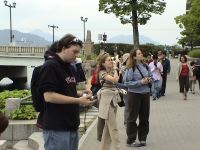
Our group spent a lot of time there before going to the museum. |
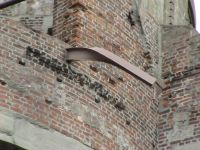
A metal girder twisted by the force and heat of the blast. |
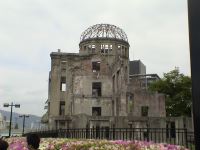
The dome is surrounded by flowers and bushes. |
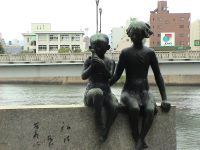
Several monuments surround the site. |
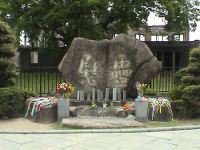
People laid out paper cranes and other memorials at this rock. |
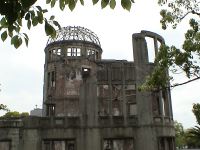
At the time, it was said that nothing would grow in Hiroshima for 75 years. That turned out to be false. |
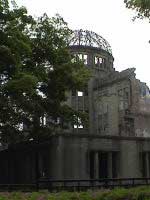
Hiroshima is not the bombed out wasteland some might think it would be. |
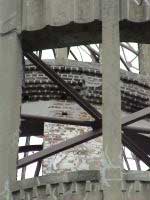
Though most of the city was destroyed, they started rebuilding immediately |
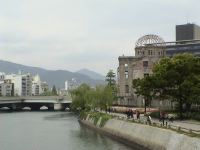
Now it is a thriving city, with a healthy downtown and its own baseball team. |
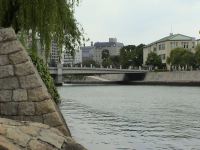
Across the bridge was the rest of the park and museum. |
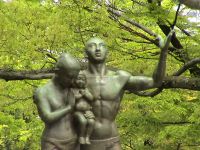
There were many monuments and works of art here. |
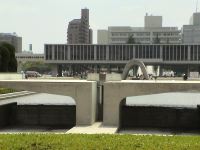
Most prominant of all was the eternal flame, reflecting pool, and the museum. |
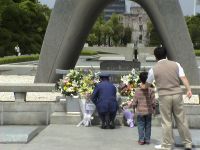
A Police Officer straightens up some bouquets. |
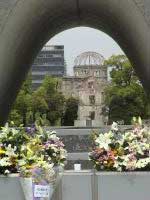
The arch frames the flame and the dome across the river. |
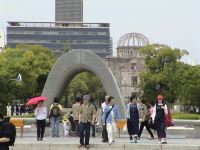
Lots of people come here, including survivors of the attack. |


